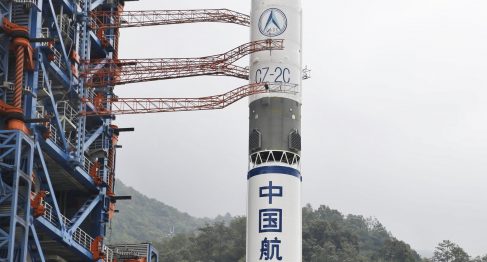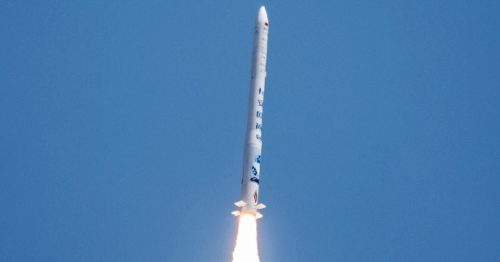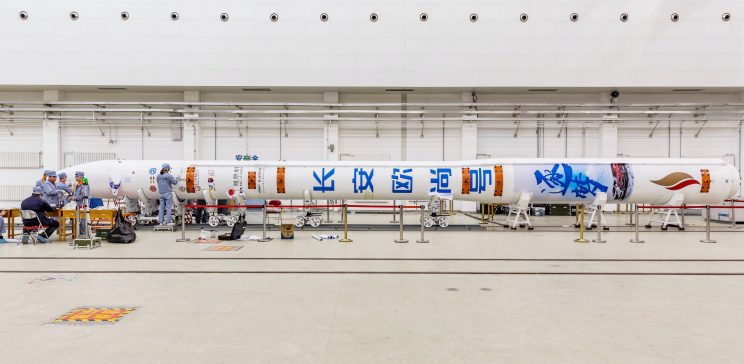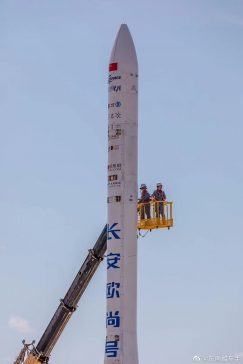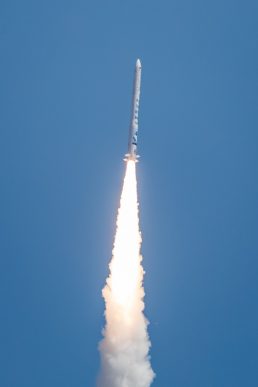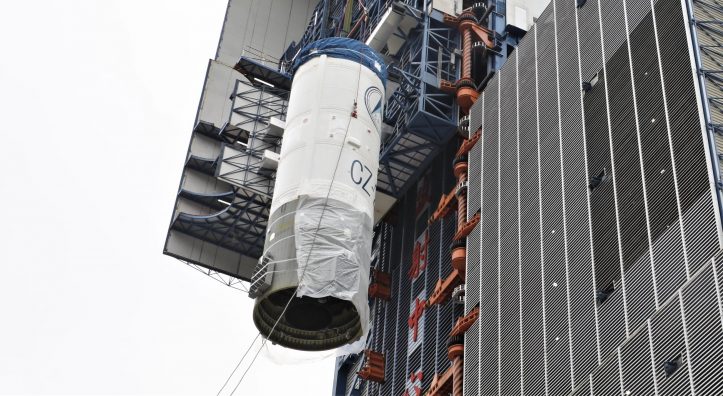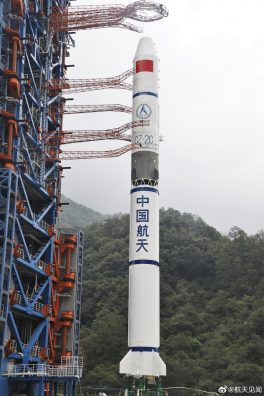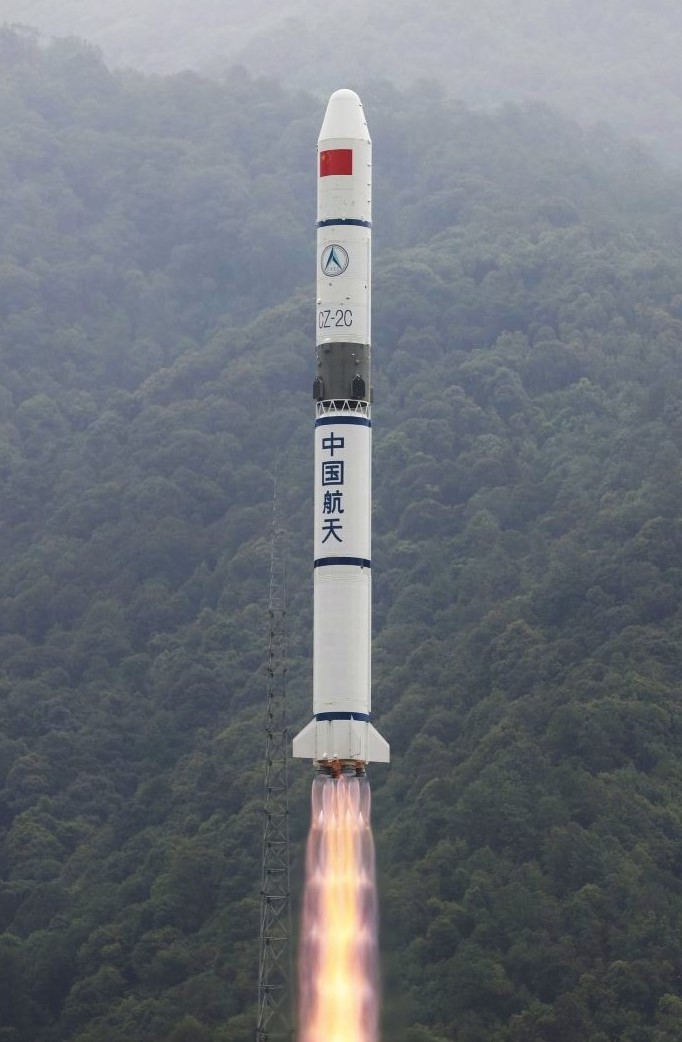Eric Ralph · August 1st, 2019
Welcome to the latest edition of DeepSpace! Each week, Teslarati space reporter Eric Ralph hand-crafts this newsletter to give you a breakdown of what’s happening in the space industry and what you need to know.
Although the accomplishments aren’t quite as flashy as a launch to the Moon, the last week has featured a number of interesting developments and significant milestones from both the state-run and quasi-commercial wings of Chinese spaceflight.
In the commercial realm, Chinese startup iSpace became the country’s first commercial entity to successfully reach orbit, achieving the feat with a three-stage solid rocket called Hyperbola 1.
One day later, state-owned Chinese company China Aerospace Science and Technology Corporation (CASC) completed its 50th successful Long March 2 rocket launch on a relatively routine government spy satellite mission. Unique was the fact that the rocket marked the first flight test of grid fins – extremely similar to those used on SpaceX’s Falcon 9 – on a Long March rocket.
The march to orbit
- In 2019 alone, three Chinese spaceflight startups have made their first orbital launch attempts and more tries are planned in the second half of the year. OneSpace and LandSpace both got close but ended up suffering partial failures that cut their attempts short before safely reaching orbit.
- Enter iSpace: one of dozens of startups in a burgeoning Chinese commercial spaceflight industry, the company’s three-stage solid rocket – named Hyperbola 1 – became the first Chinese startup-launched rocket to successfully reach orbit on July 25th.
- Although a large amount of the hardware may well have been procured (or licensed) wholesale from CASC, the success still signifies the start of a new alternative to government launches for companies (and perhaps government agencies) seeking to launch smaller satellites.
- Hyperbola 1 stands about 21m (68 ft) tall, is 1.4m (4.6 ft) in diameter at its widest point, and weighs about 31 tons (68,000 lb) when fully fueled. Three solid rocket stages are followed by an extremely small fourth stage meant to circularize the payload(s) in low Earth orbit (LEO).
- The rocket is capable of launching as much as 260 kg (570 lb) to a 500 km (310 mi) sun-synchronous orbit (SSO).
- For iSpace, Hyperbola 1 is more of a stopgap measure as the company works to develop Hyperbola 2, a significantly larger launch vehicle meant to feature a reusable booster and internally-developed liquid rocket engines.
- Ultimately, Hyperbola 1 reaching orbit is an exciting milestone, but it will be far more significant when a Chinese startup reaches orbit with a launch vehicle it has truly designed and built itself. A number of companies aim to do just that next year (2020).
The sincerest form of flattery…
- A day later (July 26th) and approximately 1000 miles (1600 km) to the southeast, state-run corporation CASC was preparing for a routine launch of its Long March 2C rocket, carrying a trio of relatively small spacecraft for a government spy satellite constellation.
- Technically known as YW-30 Group-5, the launch was a routine success that just so happened to be the Long March 2 family’s 50th successful launch in more than 35 years. The family has only suffered one in-flight failure.
- Long March 2C is a two-stage rocket that stands 42m (138 ft) tall (shorter than Falcon 9’s first stage), 3.35m (11 ft) wide, and weighs ~233 tons (514,000 lb) fully fueled. The 2C variant is capable of launching ~3850 kg (8500 lb) into LEO and more than 1250 kg (2750 lb) into geostationary transfer orbit (GTO).
- Although the rocket’s 50th launch success milestone is worth recognizing, this particular launch wound up drawing a significantly greater amount of attention for an entirely different reason: attached to the outside of the Long March 2C’s booster interstage was a quartet of immediately familiar grid fins.
- SpaceX has grown famous in the last five or so years for its spectacularly successful Falcon 9 recovery and reusability, aided in no small part by grid fins used by the booster to retain aerodynamic control authority during its hypersonic jaunts through the atmosphere.
- The appearance of grid fins on a Chinese rocket – looking undeniably similar to SpaceX’s first-generation aluminum fins – raised some (moderately xenophobic) ire in the space community, with people falling back on the stereotype of the perceived willingness of Chinese people to flagrantly ‘copy’ ideas.
- Both the stereotype and the grid fin-stoked ire are arguably undeserved. SpaceX did not invent grid fins, nor did it invent the concept of using grid fins to guide suborbital projectiles.
- In fact, CEO Elon Musk would almost certainly be happy to see someone – anyone! – blatantly copy SpaceX’s approach to reusability. A blatant copy, while not exactly worthy of pride, is still a major improvement over companies sticking their heads in the sand and tacitly choosing insolvency and commercial irrelevance rather than admit that they were wrong and SpaceX was right.
- According to CASC, this mission’s grid fins were included to flight-test their ability to more carefully guide the booster’s return to Earth. China infamously takes a… lax… approach to range safety, allowing spent boosters and fairings to haphazardly crash into inhabited areas, often containing remnants of their sometimes toxic propellant.
- Indeed, this particular booster did appear to crash in an uninhabited valley, be it thanks to those experimental grid fins or pure chance
- However, aside from not crashing large objects in populated areas, CASC and China have plans to develop a Long March 6 rocket with a reusable booster that will use the same recovery methods as Falcon 9. That rocket could fly as early as 2021 and July 26th’s grid fin test is an obvious sign that work is ongoing.
- If China manages to develop and launch a partially reusable rocket by 2021, they will be miles (and years) ahead of its space agency peers (NASA, ESA, CNES) and companies like ULA and Arianespace.
Thanks for being a Teslarati Reader! Stay tuned for next week’s issue of DeepSpace.
– Eric

<!–
–>
var disqus_shortname = «teslarati»;
var disqus_title = «DeepSpace: China tests SpaceX-reminiscent grid fins after iSpace snags orbital milestone»;
var disqus_url = «https://www.teslarati.com/deepspace-china-spacex-esque-grid-fin-test-ispace-orbit/»;
var disqus_identifier = «teslarati-110749»;

